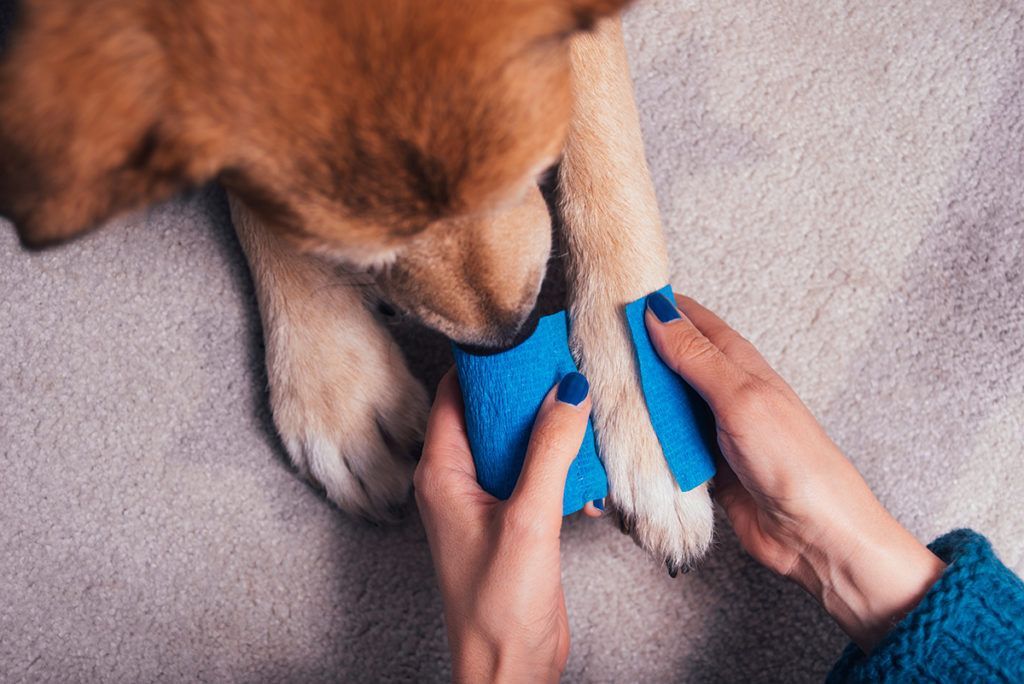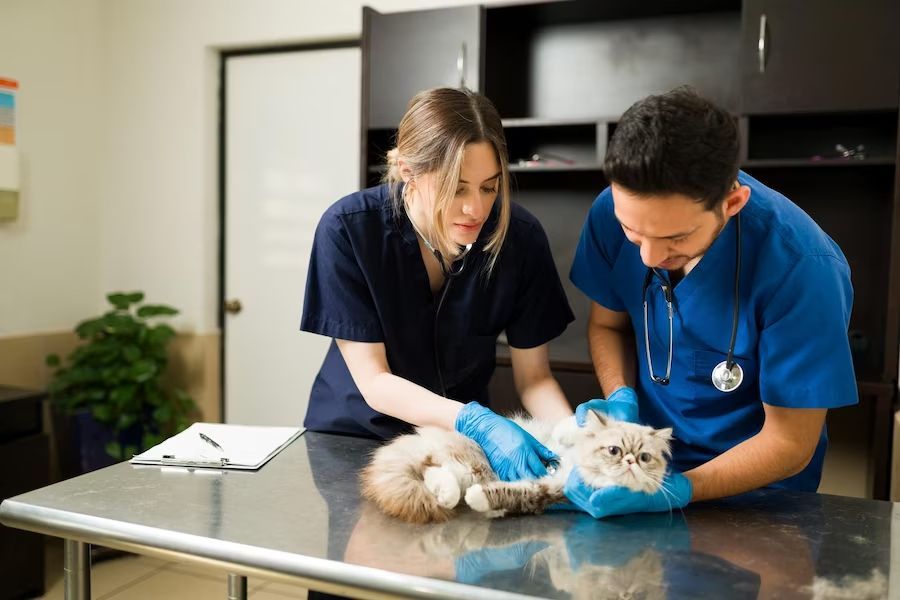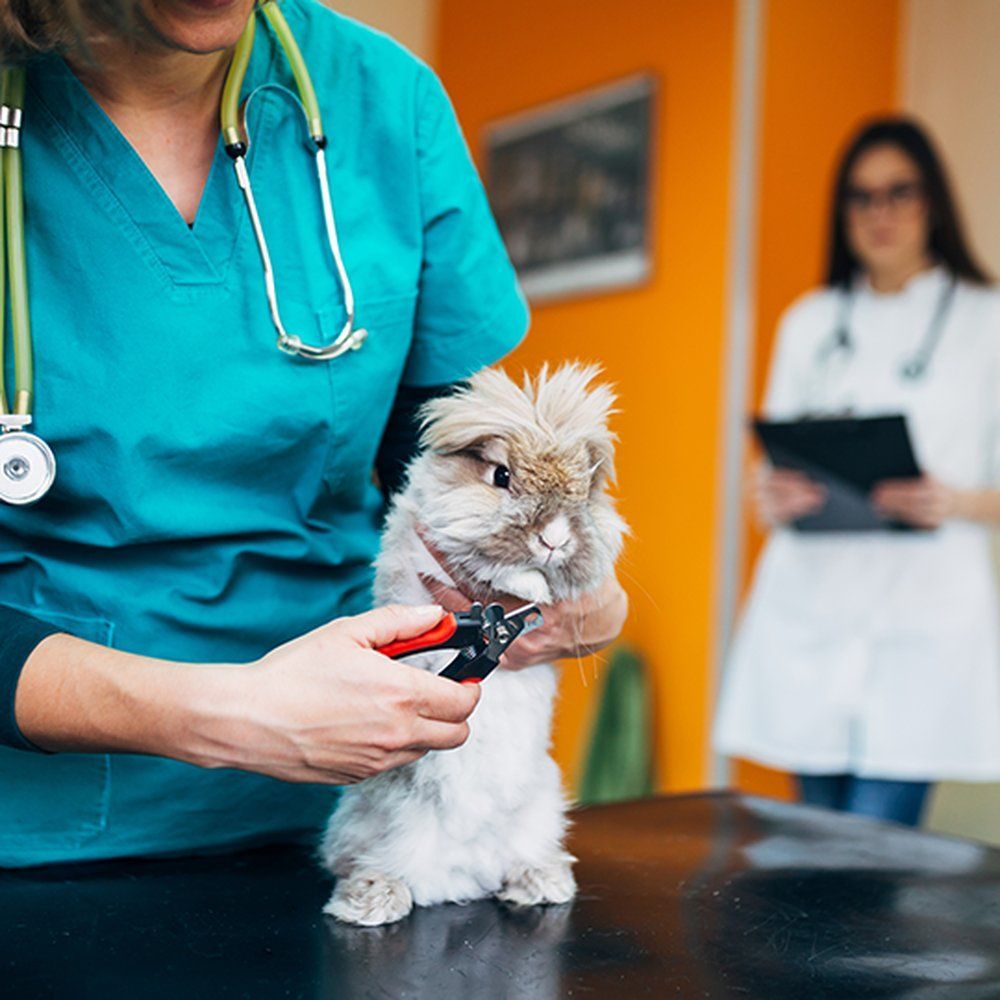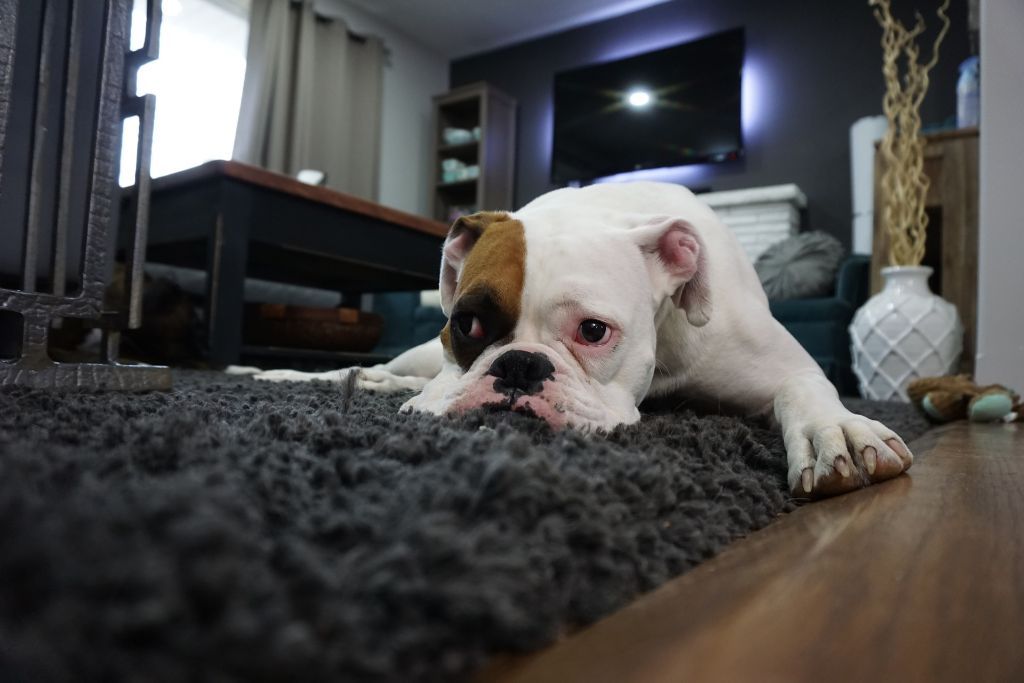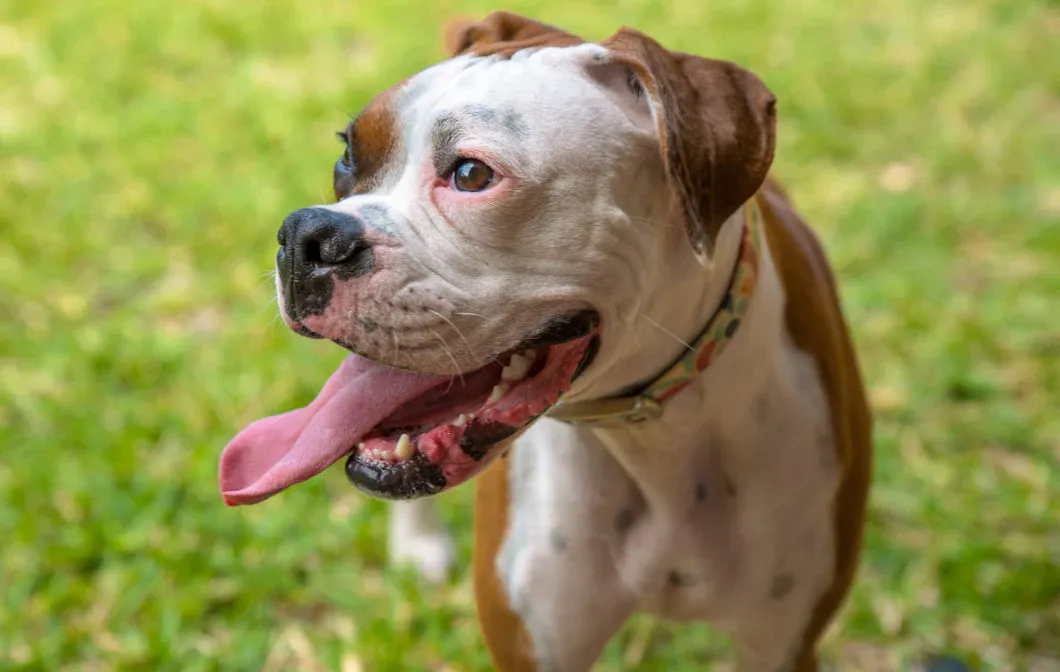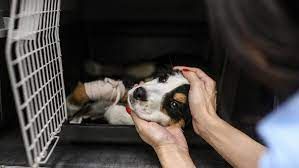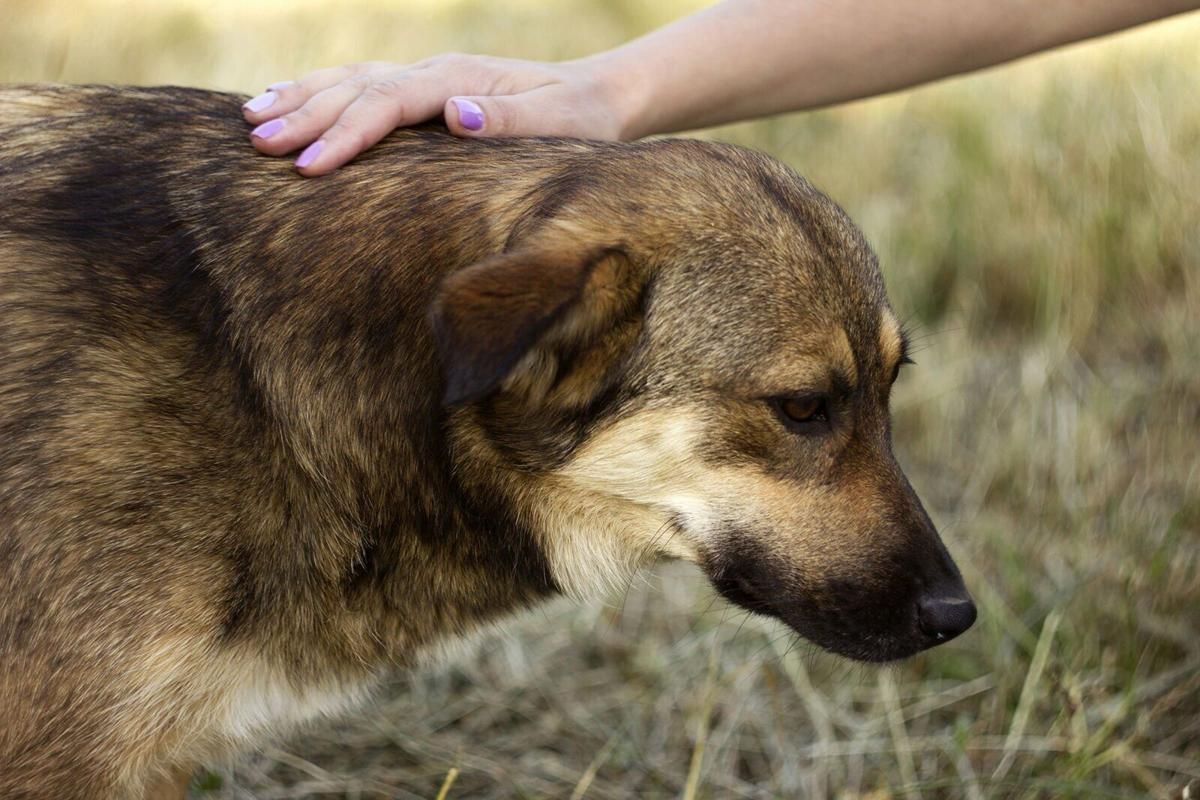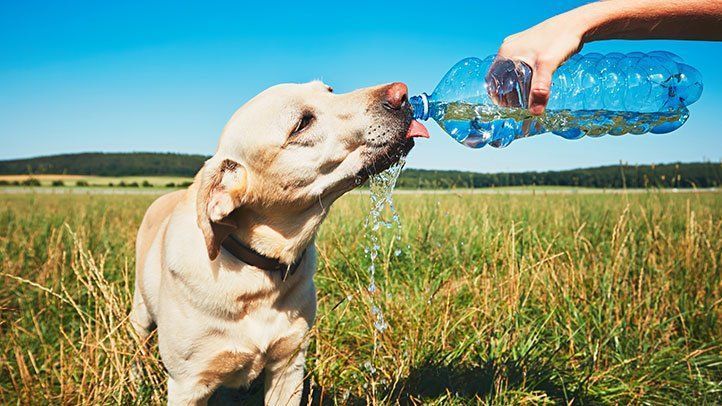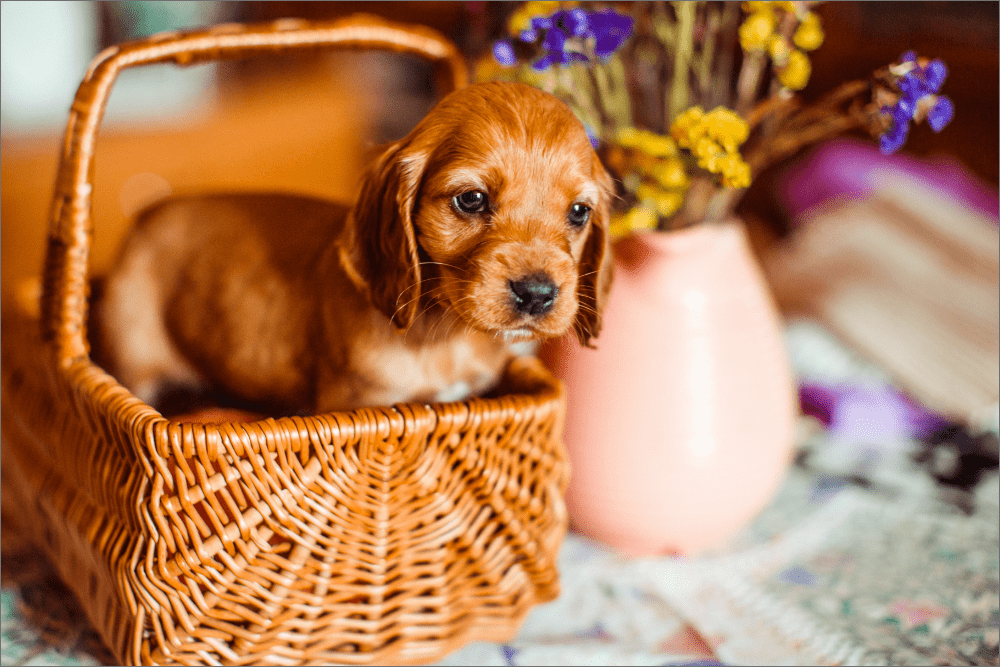Why Is My Dog Panting At Night?
So why would a dog be panting at night, and is this something you should be concerned with?
In this article we will get into the details of a dog’s nighttime panting, and help you better understand what this behavior can mean for your canine companion.
What Is Panting And Why Do Dogs Do It?
Panting is a standard canine behavior that our dogs participate in each day.
Panting is a dog’s way to regulate their body temperature with normal activity, allowing them to trade the hot air in their lungs for the cool air outside.
Their lack of sweat glands make this action essential, as this is one of the only ways a dog can cool off.
This is why you often see your dog panting during activities that raise their body temperature, or when they are in a warm environment.
Normal Respiratory Rate In Dogs Vs Panting
If you are unaware of what a normal respiratory rate or panting habits looks like in dogs, you may have a hard time spotting when something is abnormal.
A dog’s standard respiratory rate when resting should be anywhere from 10-30 breaths per minute, with respirations climbing a bit when they are active.
Each breath should come with ease, and should not involve a large amount of abdominal effort.
Counting how many pants per minute is nearly impossible, as they inhale and exhale at such a rapid rate.
However, when a dog is panting, they should not be struggling to pull in air.
Their mouth is typically open, their gums and tongue are pink, and they are likely still up and moving as usual.
When Is Panting Normal In Dogs?
There are many scenarios in which painting is completely normal in dogs.
Panting can occur any time a dog pushes themselves physically, whether they are running around the backyard or playing a game of fetch.
This can also occur when a dog’s body temperature rises, which is common in warm or humid environments.
Panting can also occur when a dog is emotionally overwhelmed.
This can occur with stress, fear, anxiety, and even excitement.
For example, panting in the vet’s office is extremely common for nervous pups.
Basically, panting can be normal when there is any form of obvious trigger.
Whether it is activity, temperature, or even emotions, panting is typically normal when it occurs in an acceptable setting.
9 Main Reasons Why Your Dog Panting At Night
Though panting is to be expected in many situations, sudden panting from your dog at night should warrant some concern.
Whether it is due to underlying stress or a potential health concern, panting at night typically has a cause.
To help you better understand your pup, let’s discuss some of the most common factors behind panting in dogs at night.
Your Dog Is Too Warm
Have you ever tossed and turned in the middle of the night due to the warm temperature in your room?
Even humidity in your sleeping area can make it challenging to rest properly, causing you to sweat and throw your blankets to the side.
Dogs can have this experience as well, causing them to pant in effort to cool down.
If it seems warmer than usual in your home or sleeping area, it’s very possible that your dog is panting because they are hot.
This is very common in the warm summer months, especially in dogs with long or thick fur.
Your Dog Is Experiencing Noise Anxiety
The noises around your home will often seem much louder at night when there are minimal distractions.
Something as simple as a passing car or wildlife around your home can catch your dog’s attention, causing them to wish they could get an up front view of the action.
If these sounds are too distracting, this could cause your pup to become anxious.
If this is ever the case, your dog may pant as a result.
This is especially common when loud noises are present outside, ranging from thunderstorms to fireworks.
Your Dog Is In Pain
Have you ever noticed that your injuries or your sickness always seem to be more uncomfortable at night?
Whether its due to few distractions or sleeping positions, sometimes our nighttime pain can be unbearable.
Unfortunately for our pups, this can happen to them as well.
If a dog is unable to sleep due to any type of pain they are experiencing, this can cause them to pant in distress.
Pain ranging from a severe ear infection to back pain can cause significant stress for a pup, causing them to pant or appear restless.
These dogs will typically display other behavioral changes as well, so it’s important to review all aspects of their behavior.
The Facial Structure Of Your Dog
Facial structure can play a role in a dog’s ability to sleep comfortably.
Dogs with short muzzles and flat faces may struggle to pull in enough air as they rest, causing them to pant due to the general discomfort.
This can be further exacerbated by factors ranging from sleep position to environmental temperatures.
If you have a flat faced dog that tends to pant at night, this could be due to the general stress surrounding their ability to breathe comfortably.
Your Dog Is Experiencing Restlessness
Tossing and turning at night due to any reason can be frustrating.
Our dogs can struggle to sleep on occasion as well, especially if they did not receive enough daily exercise or stimulation.
If this is the case for your canine friend, they may pant and pace at night when everyone else settles.
Your Dog Has Fear
Fear can be a driving force in many cases of canine anxiety at night.
This is especially true in dogs that do not feel comfortable with being left alone, as their humans falling asleep can be seen as the ultimate form of separation.
This fear can further amplify in a dark and quiet home.
A dog that is afraid to be left alone at night may pant, shake, bark, and pace as a result of their current stress.
If this is the case, many of these dogs will display signs of anxiety throughout other times of the day as well.
Your Dog Has Cognitive Dysfunction
If you have a senior canine friend that seems to be deteriorating mentally, it is very possible that they are experiencing cognitive dysfunction.
Cognitive dysfunction is a condition that is often compared to human dementia, as dogs may begin to decline in similar ways.
Dogs with this condition may experience:
- Disorientation
- Changes in personality
- Altered behaviors
- Confusion
- Restlessness.
For whatever reason, these symptoms are often amplified at night.
Sundowner syndrome refers to the confusion and distress a dog with cognitive dysfunction experiences at night.
These senior pups experience everything from heavy panting to mindless wandering, often causing a stir throughout the entire house.
This is extremely stressful for the dog affected, so many will pant and pace for hours until they calm down.
Your Dog Is Experiencing Vision Or Hearing Impairment
A loss of a dog’s hearing and vision abilities can be extremely stressful for a dog, especially at night.
Moving throughout the home is made even more challenging at night time, as they cannot rely on shadows or rough outlines of objects around them.
Hearing impairment can also be a bit scary at night, as they may still be coming to terms with this sudden change in their senses.
If this becomes too stressful for the dog, many will begin to pant.
Other Underlying Illness
Underlying illness can lead to significant distress for a canine friend.
Whether they are experiencing pain, respiratory distress, or anxiety surrounding their symptoms, many dogs can begin to feel overwhelmed.
These symptoms may even be more exaggerated at night, as the dog has nothing else to be distracted with.
Some of the many underlying illnesses that can cause a dog to pant at night include:
- Any form of GI upset
- Respiratory illness
- Joint disease
- Cardiac disease
- Any other condition that can cause some form of discomfort
These conditions will typically lead to other abnormal symptoms or changes in behavior, so it’s important to examine their habits for any other clues.
Why Does My Dog Wake Up Panting?
If you wake up suddenly to your dog panting next to you, you may be wondering what could cause this sudden stir.
We know now that panting at night is typically a result of some form of discomfort, whether it is physically or emotionally uncomfortable.
This often stands true for a dog that wakes up panting as well.
Your dog may wake up and immediately pant due to a distressing dream, an upset stomach, joint pain, ear infection pain, scary noises outside, and any other occurrence that could jolt them out of a comfortable sleep.
Should I Take My Dog To The Vet?
If your dog is suddenly panting at night, you may wonder whether or not it warrants a vet visit.
Some panting episodes resolve without issue and never return, while others seem to signify extreme distress in the dog.
It’s always a good idea to give your vet a call in these moments, but let’s break it down a bit to help you make an educated decision.
You should have your dog seen by a vet when they are panting at night if:
- There are no obvious factors that could cause this stress like environmental temperature, noises, anxiety, restlessness, etc.
- They are having any GI upset.
- They are displaying signs of pain such as limping, stiff gait, pawing at or licking one area, whining, and weakness.
- They have been experiencing other strange behaviors or symptoms before this episode.
- They appear disoriented or confused.
- They have any underlying or chronic health conditions.
No matter what, we always suggest giving your vet or an emergency vet a call when these episodes occur without reason.
By explaining the situation and any factors that could lead to this, they can better determine if your dog needs immediate help or not.
What To Expect At The Vet
If you do decide to take your dog to the vet when they are panting at night, there are an array of things you can expect.
First, your vet will always gather a thorough history and perform a physical exam.
This will help them not only better understand your pup and their symptoms, but also determine which diagnostics would be best.
Your vet may even see an obvious issue during their physical exam, like a painful ear infection or an infected tooth.
Once they have performed the physical exam, your vet can decide which diagnostics would help them get to the bottom of your dog’s symptoms.
This could range from blood tests to x-rays based on your dog’s situation, so we always suggest trusting their guidance.
Many underlying factors can cause a dog to pant at night, so it’s important to allow your vet to investigate further.
Can I Prevent Panting At Night In My Dog?
It’s not always possible to prevent your dog from panting at night, but there are some tips that could promote peaceful rest for your dog going forward.
Some of these tips include:
- Keeping their sleeping area at a comfortable temperature for them. Every dog is different, so you will need to get to know your pup and their preferences.
- Offering them a comfortable bed or sleeping area that meets their needs. For example, a dog with joint disease will need a supportive bed that does not cause further pain as they sleep.
- Offering your dog plenty of exercise throughout the day. If your pup has pent up energy at night when you are trying to rest, this can be extremely aggravating.
- Tending to any strange symptoms or behaviors throughout the day. Ignoring any signs of brewing illness can make for an uncomfortable night for you and your pup.
Not all situations can be prevented, but you can help to promote comfort for your pup in the nighttime hours.
If your dog still continues to pant at night in spite of these efforts, it may be time to reach out to your veterinarian for guidance.
Final Thoughts On Dog Panting At Night
Though panting at night could be due to a benign cause, it should always warrant some attention on our part.
Once you get to know your pup and their standard sleeping habits, you can easily pick up on any strange behaviors in the future.
Contact with your local vet for the best advise
Resource Center
